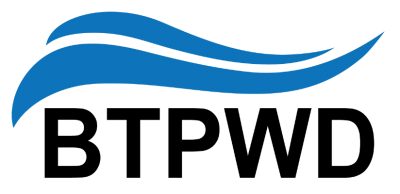We are all connected to the same public drinking water system
A cross connection is a link between a possible source of pollution and a potable water supply. A pollutant may enter the potable water system when the pressure of the pollution source exceeds the pressure of the potable water source or when a sudden loss of pressure occurs in the water system and backflow occurs
Backflow or backsiphonage occurs when water flows backward through the water supply system. When the water is accidentally mixed with hazardous chemicals or bacteria, it is dangerous!
How does contamination of water occur?
Water normally flows in one direction, from the public water system through the customer's plumbing to a plumbing fixture. Under certain conditions water can flow in the reverse direction. Potentially contaminated water from a customer's premise may backflow through an unprotected cross connection and enter the public water sypply. There are two types of backflow - backsiphonage and backpressure.
What are some common areas where cross connections are a concern?
- Hose bibbs
- Boiler
- Cleaning/Mop Stations
- Lawn Irrigation Systems
- Fire Protection Systems
- Lab and Medical Equipment
- Photo Developing Equipment
How do we keep the water safe?
Bloomington Township Public Water District is required by State Regulations to have a plan and process to identify unprotected cross connections, and to ensure they are eliminated or protected with an approved backflow preventer to protect the public water supply. Some backflow preventers, or backflow prevention assemblies, require annual testing to ensure they are in proper working condition.
What must I do to help prevent contamination of drinking water and protect the water supply?
As required by State Regulations, Bloomington Township Public Water District will be mailing out Cross Connection Control Survey Questionnaires that must be completed by you - the water customer, and returned to the Water District. You may return the questionaire to the District office at 1717 RT Dunn Drive, or mail it to PO Box 704, Bloomington, Illinois, 61702.
What if I have a backflow prevention assembly?
BTPWD will send you a notice instructing you to have your backflow prevention assemblies tested for performance. These assemblies must be tested every year. You may typically find assemblies on supplies to main service lines to a buildling, irrigation system, fire sprinkler system, boiler or other equipment.
What else can I do to protect the drinking water supply?
DO:
-
Complete the required Cross Connection Control Survey Questionnaire provided by BTPWD.
-
Keep the ends of your hoses clear of all possible contaminants and...
-
If not already equipped with an in-line protection device, buy and intall an approved hose bibb vacuum breaker on all threaded faucets. (These devices do NOT require testing).
-
Have all backflow prevention assemblies tested every year.
-
Contact BTPWD with any questions you may have about plumbing or equipment connections.
DO NOT:
-
Submerge hoses in buckets, vats, tubs, sinks, or ponds.
-
Use spray attachments or valved spray hoses without a backflow preventer.
-
Directly connect waste drain pipes from water softeners or other treatment systems to the sewer system. All drains should be air gapped.

